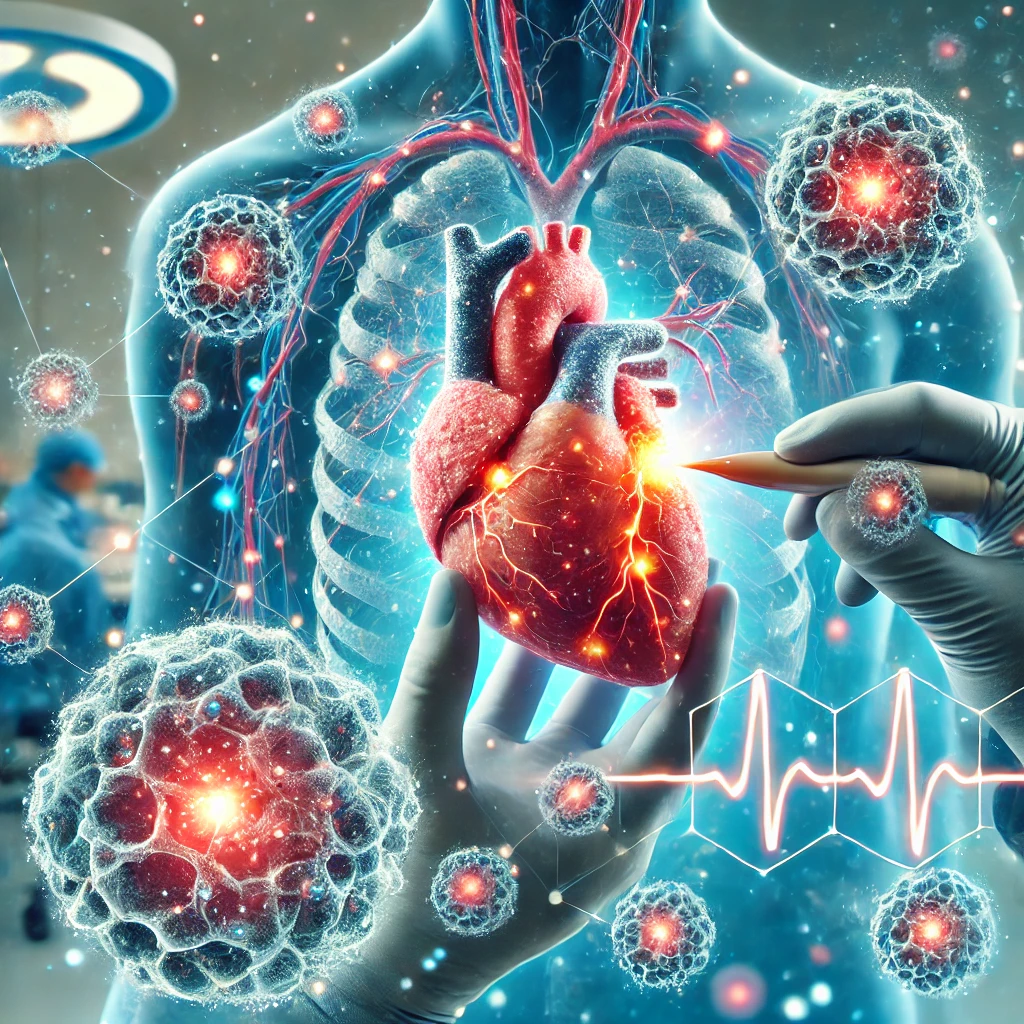
The Power of Stem Cells: A New Era in Medicine
Imagine a world where scientists can grow new tissues and even organs from a single cell, giving hope to people with heart disease, spinal injuries, or conditions that have no cure today. It might sound like a science fiction story, but stem cells are turning this dream into reality! These remarkable cells have the ability to regenerate and repair damaged tissues, and as a result, they’re revolutionizing the field of regenerative medicine.
In this article, we’ll dive into how stem cells work, the amazing treatments they’re enabling, and the bright future ahead for this groundbreaking field.
What Are Stem Cells?
Stem cells are essentially the building blocks of life. They’re special because they can develop into different types of cells—skin cells, heart cells, nerve cells, and more. This is what makes them so powerful in regenerative medicine. Instead of relying on synthetic drugs or treatments that mask symptoms, stem cells can actually repair or replace damaged tissues.
There are a few types of stem cells used in research and therapy:
- Embryonic Stem Cells: These are the most versatile type and can turn into any type of cell. They come from early-stage embryos and have enormous potential for medical treatments.
- Adult Stem Cells: Found in places like bone marrow and fat, these cells are less versatile but can still be used to treat certain conditions, especially those involving tissue repair.
- Induced Pluripotent Stem Cells (iPSCs): These are adult cells that have been reprogrammed to behave like embryonic stem cells, offering many of the same benefits without the ethical concerns.
When stem cells are harvested, they can be cultured in a lab, expanded, and then reintroduced into a patient to repair damaged tissues.
The Role of Stem Cells in Tissue Regeneration
What makes stem cells so exciting is their ability to regenerate damaged tissues. Whether it’s fixing a broken bone or helping a heart heal after a heart attack, stem cells can potentially replace or repair tissue that’s been damaged by disease, injury, or age.
For example:
- Heart Regeneration: After a heart attack, heart cells can be damaged, leading to reduced function. Stem cells have shown promise in regenerating damaged heart tissue and improving heart function.
- Joint Repair: Stem cell injections into damaged joints have been shown to help regenerate cartilage and ease the pain of arthritis. This could lead to less need for joint replacement surgery.
- Spinal Cord Injury: One of the most thrilling applications of stem cell therapy is in spinal cord injury treatment. Early-stage trials are showing that stem cells might be able to regenerate nerve tissue and restore lost function in people with paralysis.
Stem cells essentially “kick-start” the body’s natural healing process, making it faster and more efficient.
Stem Cell Therapies for Common Medical Conditions
Stem cell therapies are being tested and used for a wide variety of diseases and injuries. Some of the most exciting areas of application include:
- Heart Disease: Stem cells can help regenerate heart muscle after a heart attack, potentially reducing the need for heart transplants and improving patients’ quality of life.
- Neurodegenerative Diseases: Conditions like Parkinson’s disease and Alzheimer’s could see breakthroughs thanks to stem cell research. By generating new nerve cells, stem cells may help slow or reverse the damage caused by these diseases.
- Arthritis: Stem cell therapy is helping patients with arthritis by regenerating damaged cartilage in the joints, reducing pain, and improving mobility.
- Spinal Cord Injuries: Spinal cord injuries have traditionally been seen as irreversible. But stem cells could play a role in repairing nerve damage, offering a glimmer of hope for those living with paralysis.
These therapies are already being tested in clinical trials, and early results are incredibly promising.
The Promise of Stem Cells in Personalized Medicine
One of the most exciting aspects of stem cell research is its potential to create personalized medicine. Instead of a one-size-fits-all approach, stem cells allow doctors to develop treatments tailored specifically to a patient’s needs. This is particularly important in treating chronic conditions, where the standard treatments might not work for everyone.
What’s more, stem cells can be harvested from a patient’s own body, which reduces the risk of rejection. Imagine a future where a person suffering from a chronic condition like arthritis or diabetes could receive a personalized stem cell treatment made just for them. The treatment would be specifically tailored to their genetic makeup, which could lead to more effective results and fewer side effects.
Combining stem cells with other technologies like gene editing will likely be the next frontier in personalized medicine.
Ethical Considerations and Challenges in Stem Cell Research
Despite the promise, stem cell research raises several ethical and technical challenges. The most prominent concern is the use of embryonic stem cells, which are derived from early-stage embryos. This process raises moral questions for some people, as it involves the destruction of embryos.
However, recent advances in induced pluripotent stem cells (iPSCs) have helped address some of these concerns. iPSCs are adult cells that are reprogrammed to act like embryonic stem cells, which means no embryos are needed in the process. This has made stem cell research more ethically acceptable and could accelerate the development of new therapies.
Additionally, as with any cutting-edge medical technology, there are regulatory and safety concerns. Ensuring that stem cell treatments are safe, effective, and accessible will be a major challenge moving forward.
The Future of Stem Cell Therapy in Regenerative Medicine
The future of stem cells in regenerative medicine is incredibly exciting. Researchers are working on ways to grow entire organs from stem cells, a concept that could completely change the landscape of organ transplants. If successful, we could see patients receiving organs that are made from their own cells, reducing the risk of organ rejection and eliminating long waiting lists for organ transplants.
Stem cells are also at the heart of 3D bioprinting, a technology that can create tissues and even organs layer by layer, using stem cells as the building material. These advancements could lead to the development of fully functional organs that could be used in patients who need transplants.
Stem cells also offer hope for curing diseases that were once deemed incurable, like Parkinson’s, spinal cord injuries, and even certain types of cancer. As technology improves, the possibilities for stem cell therapy will only continue to expand, offering patients a new world of hope.
Looking Ahead: The Exciting Future of Stem Cell Therapies
Stem cells are undoubtedly changing the future of medicine. From regenerating damaged tissues to offering personalized treatment options, these incredible cells hold the key to a range of medical breakthroughs. As research progresses, stem cells will play an even larger role in curing diseases, improving lives, and even extending life expectancy.
What do you think about stem cell therapy? Have you had any experiences with it or have questions about how it works? Share your thoughts in the comments below!

Leave a Reply